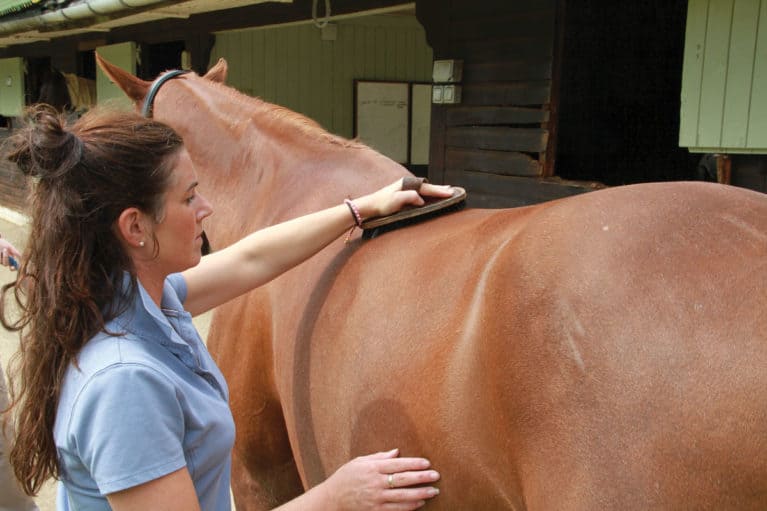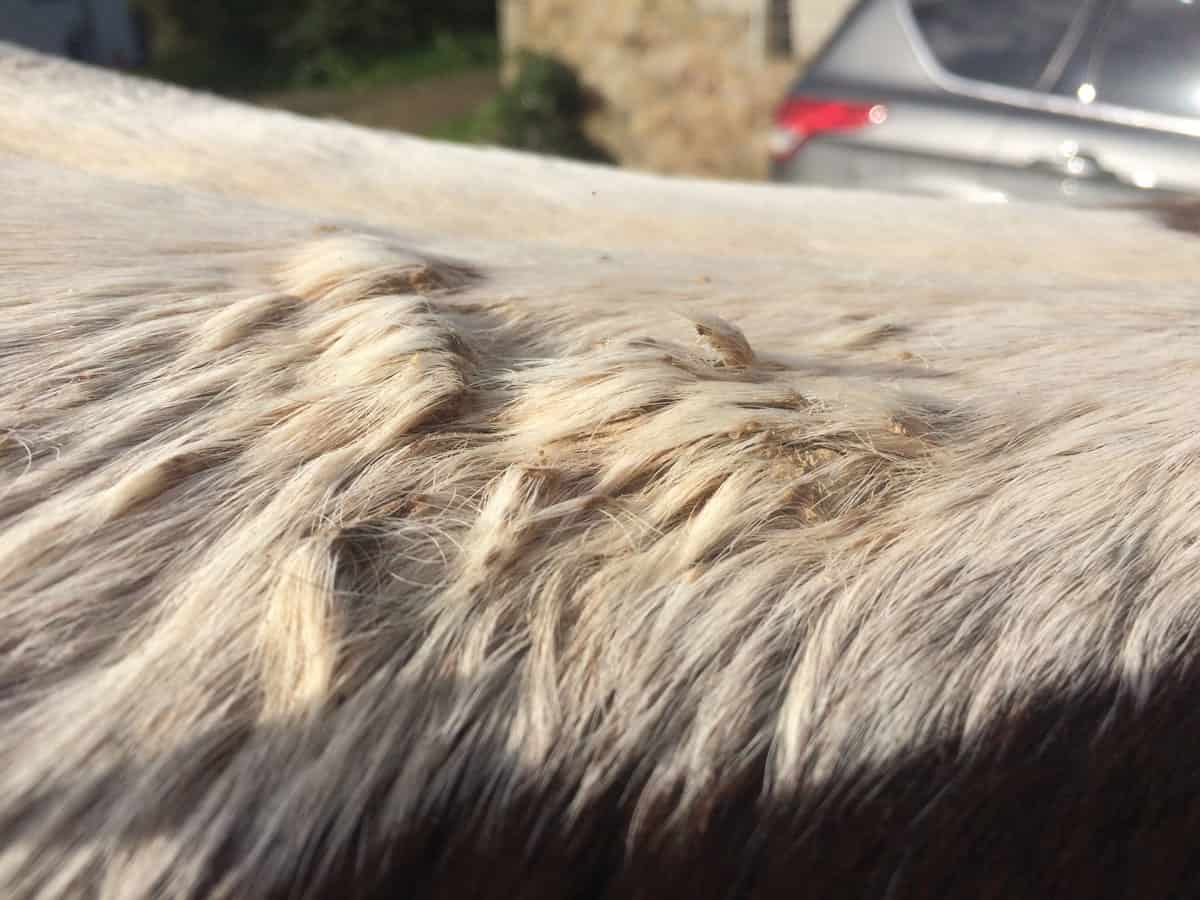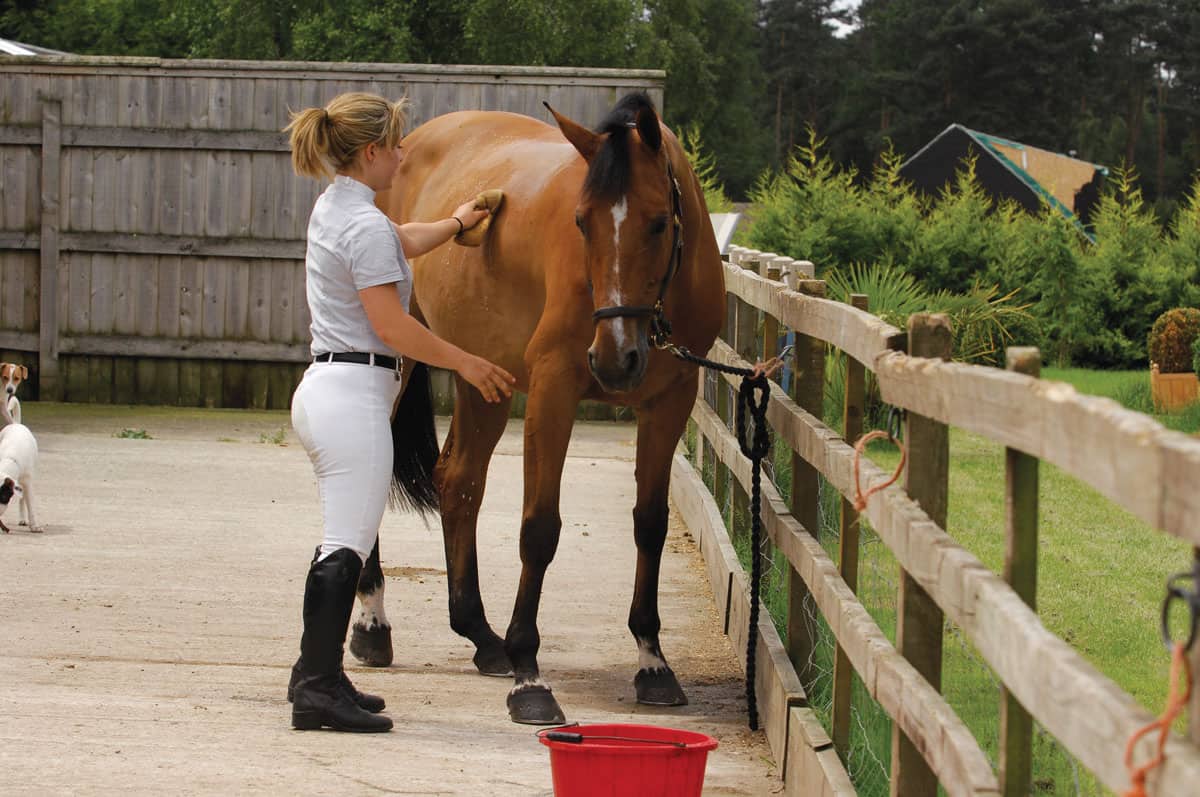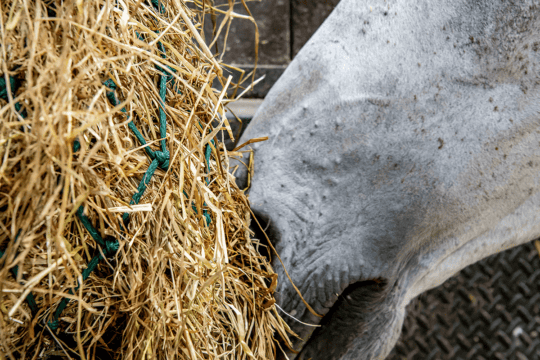Has your horse developed scabby, crusty areas of skin? It could be caused by a condition called rain scald. Vet Jenna Elliott, from Rosevean Veterinary practice, explains

Rain scald is a common skin disease that acquired its name because the condition causes the skin to look as though it has been scalded by rain droplets. It’s also known as dermatophilosis or rain rot and it’s caused by the bacterium Dermatophilus congolensis – the same organism that’s responsible for causing mud fever on legs.
Rain scald can occur all year round, although it’s most common when there are long periods of wet weather with warm temperatures and high humidity. The bacteria thrive when there is limited oxygen, so the condition is usually seen in the winter months when horses’ coats are much longer.
When bacteria attacks
The bacteria that cause the condition are thought to originate in the soil and are present on many horses’ skin. Ordinarily it doesn’t cause any harm to the horse and it’s only when the skin becomes compromised – for example, by a cut, abrasion or insect bite – that the bacteria is able to access the deeper layers of the skin. When this happens, acute inflammation and infection of the skin occurs.
The bacteria can be passed from horse to horse by flies, and by sharing rugs, tack and grooming equipment, putting more horses at risk of developing the condition, so it’s important that equipment used by horses affected by rain scald is kept separately or thoroughly disinfected after.
Risk factors
It’s not known why, but light-coloured horses and ponies, such as palominos and greys, are more likely to suffer from rain scald, and coloureds are also more likely to be affected over their white portions, where the skin is pink. Young horses with poorly developed immune systems and older horses with underlying disease, such as PPID, or compromised immune systems also seem to be more at risk.
Spotting signs of infection
Common sites of infection are the back, head (tips of the ears, around the eyes and on the muzzle) and neck. Initially areas start exuding a sticky secretion that matts the hair together into small clumps. This progresses to crusty scabs that often have tufts of hair attached to them, which can stand up and look like paint brush bristles. The scabs vary in size and, if removed, there may be yellow pus on the skin underneath that, when cleaned away, leaves the skin moist and pink.
Long-standing cases have large areas of scabs that merge together into one large plaque of coarse hair. Once the skin has become damaged, it can be invaded with secondary bacteria. Affected animals can be quite uncomfortable, especially when the affected area is touched.

Confirming the cause
Rain scald is usually easy to diagnose by the case history and clinical signs. However, it can be confused with other conditions such as ringworm and seborrhoea (excess grease production), especially in the early stages. If further confirmation is required, your vet can send a swab or scab to a laboratory for culture, where they will try to grow the Dermatophilus bacteria.
Treatment plan
Generally, rain scald isn’t a serious condition and in many cases it will eventually heal on its own, however, because it can spread to involve large areas, prompt treatment is recommended. If you’re confident that your horse’s skin condition is rain scald, you can easily treat it yourself at home, although it’s always advisable to ask your vet to have a look at it to make sure there’s nothing else going on. To treat rain scald, carry out the following procedure every day for seven to 10 days…
- Groom the affected areas to remove any loose hair. This should be done gently and carefully, because the area is often very sore.
- Remove as many scabs as possible. This is essential because the bacteria live under the matted crusts.
- Wash the affected areas with either a chlorhexidine or povidone iodine solution and warm water. Use a soft cloth or brush to massage the lather through the coat as much as your horse will tolerate. This will clean the area of any contaminants, remove a lot of loose hair and scabs, and help to improve circulation.
- Leave the solution in contact with the skin for at least five minutes before rinsing off.
- Remove as much water as possible and dry your horse off either with a hairdryer or by letting him stand in the sun. It’s very important not to let him roll, because further contamination from Dermatophilus bacteria in the soil may occur.
- When your horse is completely dry, gently brush off any more loose hair.
- Apply antibiotic cream if your vet has prescribed it. Barrier creams should be avoided because they can be difficult to wash off properly and reduce the amount of oxygen reaching the skin, encouraging the Dermatophilus bacteria to multiply.
- Keep your horse dry, either by bringing him into a stable or keeping a waterproof, breathable rug on him.
With the above treatment regime, you should see an improvement in a few days and in a week there should be signs of new hair growing back. If there’s no improvement or the condition appears to be getting worse, consult your vet. More severe rain scald may take several weeks to improve significantly and may require antibiotics. With appropriate treatment, your horse will make a full recovery.

Stop the spread
The key to preventing rain scald is to stop the spread of the bacteria…
- avoid contact with wet, muddy fields and wet conditions
- separate infected animals
- stable affected horses in a dry box and remove any damp bedding
- ensure affected horses wear lightweight, breathable turnout rugs when in the field
- provide a field shelter
- shampoo your horse after riding or exercising to remove sweat, which may encourage rain scald. Make sure his coat is completely dry afterwards
- clean and disinfect grooming kits between horses to avoid spreading the bacteria
- use a good-quality insect control to stop the spread of the bacteria from one horse to another via flies









